 |
||||||||||||||||||||||||||||||||||||||||||||||||||||
|
Fall 2009 Issue- Vol. 6, No.3
|
||||||||||||||||||||||||||||||||||||||||||||||||||||
|
Preview the Fall '09 issue
|
||||||||||||||||||||||||||||||||||||||||||||||||||||
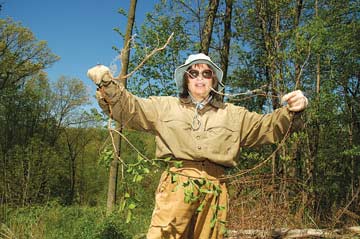 |
||||||||||||||||||||||||||||||||||||||||||||||||||||
| Bittersweet…Bitter Pill. Our leadoff story warns about an invading vine that can take over and practically destroy a woodland with astonishing speed. If you have a woodland, oriental bittersweet is an invasive species you should know about. Read how one landowner got blindsided by bittersweet and now is fighting back. | ||||||||||||||||||||||||||||||||||||||||||||||||||||
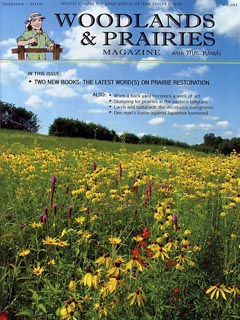 |
||||||||||||||||||||||||||||||||||||||||||||||||||||
|
Marilynn Keller fights back against oriental bittersweet.
|
||||||||||||||||||||||||||||||||||||||||||||||||||||
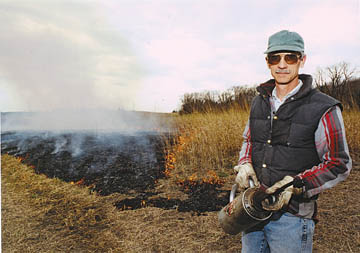 |
||||||||||||||||||||||||||||||||||||||||||||||||||||
| How to Get Lucky with Prairie Reconstruction. Prairie guru Carl Kurtz shares his years of experience in this concise, easy-to-understand story on prairie construction. | ||||||||||||||||||||||||||||||||||||||||||||||||||||
| Carl Kurtz practices what he preaches on his farm in central Iowa. | ||||||||||||||||||||||||||||||||||||||||||||||||||||
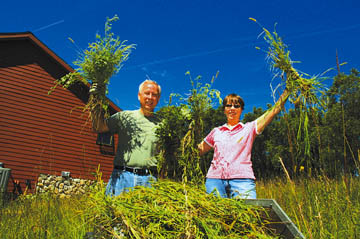 |
||||||||||||||||||||||||||||||||||||||||||||||||||||
| Sweat, Blood and Cheers. A vacation home turned into more work than an Illinois couple bargained for when they decided to restore their lot to its prairie roots instead of putting in a conventional lawn. But the project became a labor of love as their weeding and thinning brought back the wildflowers and restored a rare savanna remnant that might have been lost forever. | ||||||||||||||||||||||||||||||||||||||||||||||||||||
|
Are we having fun yet? Mike and Pat Moone enjoy another day of getting away from it all at Apple Canyon Lake in northwestern Illinois.
|
||||||||||||||||||||||||||||||||||||||||||||||||||||
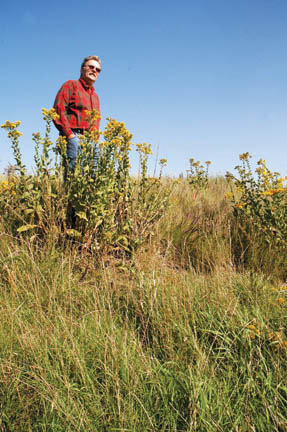 |
||||||||||||||||||||||||||||||||||||||||||||||||||||
| The Risk Taker. Bruce Morrison brought a small prairie back to life and put his own life on the line when he decided to make it on his own as a prairie artist. Morrison could have had the security of a salaried job, but he threw it over for the chance to live near some of the best remaining examples of the tallgrass prairie, and to depict that prairie through his art. Stunning examples of Morrison’s paintings and photography accompany this story. | ||||||||||||||||||||||||||||||||||||||||||||||||||||
|
Morrison and his muse: Worth the gamble.
|
||||||||||||||||||||||||||||||||||||||||||||||||||||
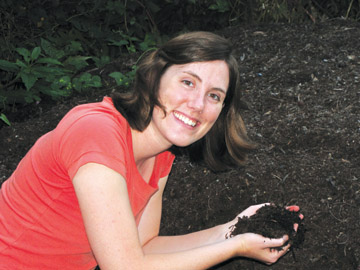 |
||||||||||||||||||||||||||||||||||||||||||||||||||||
| The Recyclers. Cupping a handful of humus, Jennifer Hopwood, our “Bug Lady,” takes up the important role that insects play as recyclers. Without their services we’d be up to our necks in dead organisms and waste, she says. As for humus, it results from the break- down of organic matter by insects and other organisms. Humus allows for the release of the nutrients in the recycling process. | ||||||||||||||||||||||||||||||||||||||||||||||||||||
|
Jennifer L. Hopwood digs into the work of insects as decomposer/recylers.
|
||||||||||||||||||||||||||||||||||||||||||||||||||||
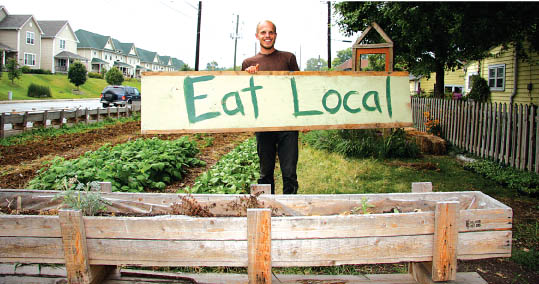 |
||||||||||||||||||||||||||||||||||||||||||||||||||||
| Urban Farmer Breaks New Ground. How local can you get? Enterprising farmer using ecological principles grows fruits and vegetables on vacant lots in an Indianapolis neighborhood. Filling a need, it could be a model for farms in other urban neighborhoods lacking good access to fresh food. | ||||||||||||||||||||||||||||||||||||||||||||||||||||
|
New kid on the block: Matthew Jose farms sidewalk to sidewalk in an Indianapolis neighborhood.
|
||||||||||||||||||||||||||||||||||||||||||||||||||||
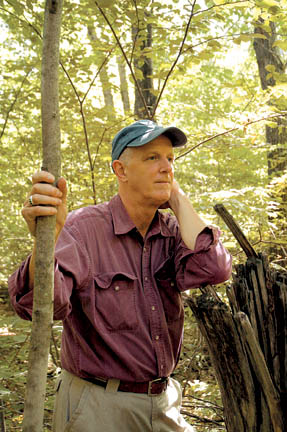 |
||||||||||||||||||||||||||||||||||||||||||||||||||||
| Walden Pond Revisited. In this important new book, The Wild Garden, author Peter P. Bundy dispels the myth of natural areas as pristine wonderlands. Contrary to the views of Thoreau and some other purists, Bundy submits that virgin forests and other examples in nature do not reach a utopian state of equilibrium where everything is hunky dory. After 26 years of his ownThoreauvian experience living in a cabin and observing his 160-acre forest in northern Minnesota, Bundy observes that it was beset with fires, windstorms, disease and other calamitous disturbances as the natural order of things. But from these losses comes renewal, Bundy writes. And the cycle of loss and renewal is the real lesson that nature teaches us. He contends that disturbance is a necessary part in the management of any ecosystem, thus justifying the work of foresters and other land managers in giving nature a helping hand. Bundy applies the cycle of loss and renewal to his own life and to human society in general in this fascinating book. | ||||||||||||||||||||||||||||||||||||||||||||||||||||
|
No utopian wonderland: Author Peter P. Bundy contemplates the cycle of loss and renewal in his own forest as a lesson in land management.
|
||||||||||||||||||||||||||||||||||||||||||||||||||||
|
Spring/Summer 2009 Issue- Vol. 6, No.2
|
||||||||||||||||||||||||||||||||||||||||||||||||||||
|
Preview the Spring/Summer 09 issue
|
||||||||||||||||||||||||||||||||||||||||||||||||||||
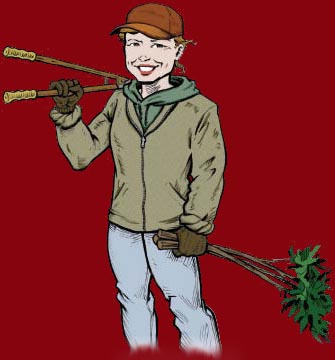 |
||||||||||||||||||||||||||||||||||||||||||||||||||||
| Dear Hearts---Yes we’re going to cut back on sugars and starches and go on a high-fiber diet to power the grid and fuel our cars. I have to see it to believe it, but the so-called transition to cellulosic energy could bring new players into the game---like people who have prairies and woodlands. Instead of burning a prairie as a management tool, maybe you’ll be baling it and hauling the biomass to your local power company. Likewise, woodland owners might find a new market for low-value trees that can be chipped and burned by power companies to reduce carbon emissions. | ||||||||||||||||||||||||||||||||||||||||||||||||||||
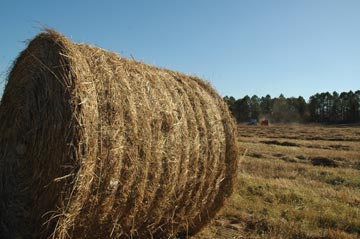 |
You read about this and more in our special report, Banking on Biomass. You’ll read how an innovative farm family is producing its own biofuel by pelletizing prairie grass and corn stover…and how land owners might someday be harvesting grasslands to supply a power company in the Minnesota River Valley. Not just cleaner air, but cleaner waters would result if more grasslands replaced cropland on marginal soil. | |||||||||||||||||||||||||||||||||||||||||||||||||||
|
Energy Prairie, Page 8.
|
||||||||||||||||||||||||||||||||||||||||||||||||||||
| Elsewhere this issue: Doug and Betsy Lake show how compass plants and other native species can point the way to saner land use in suburbia. They live in a residential development in Stillwater, Minn., that requires at least 50 percent of the yards be left in a natural setting such as a grassland, woodland or wetland. I hope such examples will turn the tide against the heavily watered, chemically intensive, manicured lawns that characterize American yards. I think lawns have their place, but not to the extent that according to one estimate they’ve become the largest single irrigated crop in America! | ||||||||||||||||||||||||||||||||||||||||||||||||||||
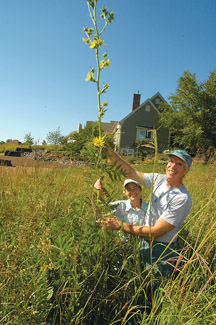 |
||||||||||||||||||||||||||||||||||||||||||||||||||||
 |
||||||||||||||||||||||||||||||||||||||||||||||||||||
|
Compass plant points the way, Page 24.
|
||||||||||||||||||||||||||||||||||||||||||||||||||||
| What’s the most rapidly spreading vector-born infection in the U.S.? It’s Lyme disease, spread by a tiny tick that likes to feed on deer---and on you if it gets the chance. But this bacterial disease is readily treated with antibiotics if diagnosed early. We report on a new diagnostic test in the offing and how scientists such as Steve Callister are taking the mystery out of Lyme disease. He collects deer ticks for his studies and has never gotten Lyme disease. Read his precautions. | ||||||||||||||||||||||||||||||||||||||||||||||||||||
|
Tick collector, Page 30.
|
||||||||||||||||||||||||||||||||||||||||||||||||||||
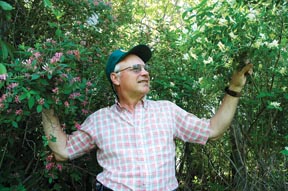 |
||||||||||||||||||||||||||||||||||||||||||||||||||||
| Our resident experts are back this issue with a bunch of things you might want to know. Jack Knight, the Tree Guy, takes up the sycamore and how it might apply to your landscaping plans. The Bug Lady, Jennifer Hopwood, explains why you should care about native bees and how you can help rear these important pollinators. Don’t fall for bush honeysuckle, says our invasive plants guy, Dan Bohlin, who explains how to control this wolf in sheep’s clothing. | ||||||||||||||||||||||||||||||||||||||||||||||||||||
|
The truth about bush honeysuckle, Page 35.
|
||||||||||||||||||||||||||||||||||||||||||||||||||||
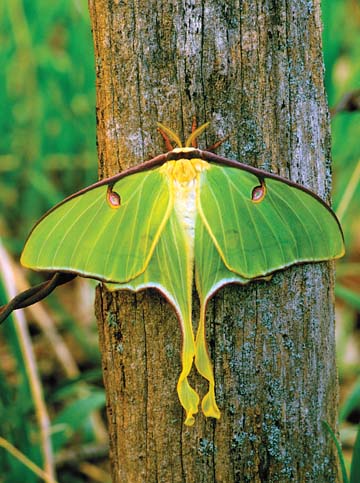 |
||||||||||||||||||||||||||||||||||||||||||||||||||||
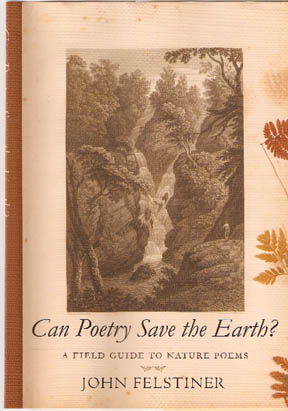 |
||||||||||||||||||||||||||||||||||||||||||||||||||||
|
Book review, Page 31.
|
||||||||||||||||||||||||||||||||||||||||||||||||||||
|
Luna Moth, Page 40.
|
||||||||||||||||||||||||||||||||||||||||||||||||||||
| OK, so we run Ole and Lena jokes, but in a form of literary cap-and-trade we also carry the writings of poet and essayist Alice D’Alessio. This issue, Alice reviews a book about poetry subtitled A Field Guide to Nature Poems. Its title asks, Can Poetry Save the Earth? “Well, perhaps,” Alice says. | ||||||||||||||||||||||||||||||||||||||||||||||||||||
| What has no mouth parts, does not eat, and lives only about a week while having sex? Read about the short, happy life of the luna moth and other fascinating facts of the natural world in Naturalist’s Notebook by noted nature photographer and writer, Carl Kurtz. | ||||||||||||||||||||||||||||||||||||||||||||||||||||
 |
||||||||||||||||||||||||||||||||||||||||||||||||||||
| To me the highlight of the issue is the center spread, where the prairie comes alive in the painting, The Prairie Is My Garden. By the late South Dakota artist Harvey Dunn, it depicts a pioneer woman and her two daughters gathering wildflowers on the Dakota prairie. If you haven’t seen this work, you’re in for real treat. If you’re familiar with the painting, it’s something to be experienced again and again, like the prairie itself. | ||||||||||||||||||||||||||||||||||||||||||||||||||||
|
Harvey Dunn, the man and his art, Page 22
|
||||||||||||||||||||||||||||||||||||||||||||||||||||
|
And I hope that you will experience this magazine again and again. Click here to find out how I can send this issue to you. Meanwhile, let’s live within our resources.
---Mrs. Woods |
||||||||||||||||||||||||||||||||||||||||||||||||||||
| Your choice of 2 special offers -
(These offers available only while supplies last.) You may pay by check or online. Make checks payable to Woodlands & Prairies. Sorry, offer good in U.S. only. Send to: Mrs. Woods Bonus Issues Offer P.O. Box 713 Monona, IA 52159 |
||||||||||||||||||||||||||||||||||||||||||||||||||||
| Already a subscriber and want to renew? Use the online option below or mail payment of $18 for a one-year renewal or $29 for two years to: Mrs. Woods, Renewals, P.O. Box 713, Monona, IA 52159 | ||||||||||||||||||||||||||||||||||||||||||||||||||||
|
|
||||||||||||||||||||||||||||||||||||||||||||||||||||
|
|
||||||||||||||||||||||||||||||||||||||||||||||||||||
|
|
||||||||||||||||||||||||||||||||||||||||||||||||||||
|
Midwest Woodlands & Prairies is published four times a year by Wood River Communications.
© by Wood River Communications. Reproduction prohibited without written consent. |
||||||||||||||||||||||||||||||||||||||||||||||||||||